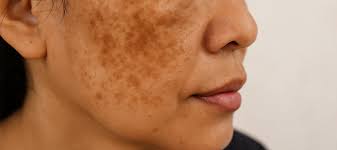Introduction
Acne can be frustrating on its own, but the marks it leaves behind often last longer than the breakout. These marks are known as post-inflammatory hyperpigmentation (PIH)—flat, dark spots that appear after the skin heals. Unlike acne scars (which change skin texture), PIH is about pigment and discoloration. The good news is that with the right approach, dark spots can fade over time and even be prevented.
What Is Post-Inflammatory Hyperpigmentation?
PIH occurs when skin inflammation triggers excess melanin production (the pigment that gives skin its color). This leads to spots that range from light brown to dark brown, depending on your skin tone.
Who Gets It?
-
More common in medium to deep skin tones
-
Can happen after acne, eczema, insect bites, or any skin injury
-
Often worsened by sun exposure
How to Prevent Dark Spots After Acne
-
Don’t Pick or Squeeze Pimples – Picking causes deeper inflammation and increases pigment production.
-
Use Sunscreen Daily – UV rays darken existing spots and slow healing. A broad-spectrum SPF 30+ is essential.
-
Treat Acne Early – Reducing inflammation lowers the risk of PIH forming in the first place.
-
Gentle Skincare – Avoid harsh scrubs that irritate the skin and worsen pigmentation.
Best Ingredients to Treat Dark Spots
Brightening Agents
-
Niacinamide – Reduces pigmentation and strengthens the skin barrier.
-
Vitamin C – Fades spots while boosting overall radiance.
-
Licorice Root Extract – Naturally lightens dark areas.
-
Azelaic Acid – Both acne-fighting and pigment-reducing.
Exfoliants
-
AHAs (Glycolic, Lactic Acid) – Help shed pigmented skin cells gradually.
-
BHAs (Salicylic Acid) – Clear pores and reduce post-acne marks, especially for oily skin.
Advanced Treatments
-
Retinoids – Stimulate cell turnover and fade discoloration.
-
Tranexamic Acid – Shown to reduce stubborn hyperpigmentation.
Lifestyle & Routine Tips
-
Consistency Is Key – Dark spots fade slowly; results often take 6–12 weeks.
-
Layer Wisely – Start with one brightening ingredient and add others gradually.
-
Hydration Matters – A healthy skin barrier heals faster and resists discoloration.
-
Professional Help – Dermatologists may recommend chemical peels, laser therapy, or microneedling for severe PIH.
Key Takeaway
Dark spots after acne—post-inflammatory hyperpigmentation—are common but manageable. Preventing PIH starts with gentle acne care, daily sunscreen, and avoiding picking. Treating it requires patience, with proven ingredients like niacinamide, vitamin C, AHAs, and retinoids. With consistent care, clear and even-toned skin is achievable.



